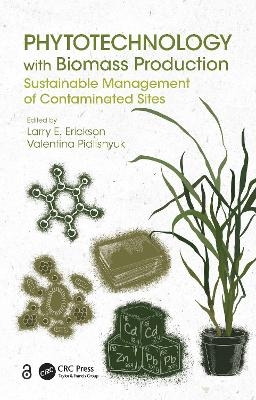
Phytotechnology with Biomass Production
CRC Press (Verlag)
978-0-367-53620-6 (ISBN)
The Open Access version of this book, available at https://www.taylorfrancis.com/books/edit/10.1201/9781003082613, has been made available under a Creative Commons Attribution-Non Commercial-No Derivatives 4.0 license.
This book explains the concept of using phytotechnology with biomass production to improve soil quality and restore contaminated sites to a useful state that has economic and social value. Phytotechnology with Biomass Production: Sustainable Management of Contaminated Sites focuses on the application of second-generation biofuel crops, primarily Miscanthus, to slightly contaminated or marginal postmilitary and postmining soils. Based on recent and ongoing research from the United States, Ukraine, the Czech Republic, and Germany, along with case studies from other countries, this is the first comprehensive book on using phytotechnology with biomass production at contaminated sites at a global level.
FEATURES
Focuses on an important topic of a growing global activity: soil improvement through biomass production
Includes case studies and success stories from different countries on application of Miscanthus phytotechnology to sites differently contaminated by trace elements, pesticides, and petroleum products
Discusses the peculiarities of Miscanthus production on postmilitary and postmining contaminated lands and the impact of plant growth regulators, soil amendments, fertilizers, and biochar to the process
Introduces soil fauna as indicators of soil health during Miscanthus phytotechnology application
Presents Miscanthus value chain associated with the processing of Miscanthus biomass to different bioproducts
While written primarily for faculty, students, research scientists, environmental and agricultural professionals, gardeners, farmers, landowners, and government officials, this book has value for all who are working on phytotechnology projects and phytomining to reduce risk and/or improve soil quality at contaminated sites. Phytotechnology with Biomass Production: Sustainable Management of Contaminated Sites is also a great new resource for those who are new to the topic and want to learn to apply phytotechnologies and biomass production with further conversion into energy and bioproducts.
Larry E. Erickson is professor of chemical engineering at Kansas State University where he has been involved in hazardous substance teaching and research for more than 30 years. He teaches CHE 650 Hazardous Waste Engineering Seminar and CHE 670 Sustainability Seminar. He directed the Great Plains/Rocky Mountain Hazardous Substance Research Center from 1989- 2003 and the Center for Hazardous Substance Research from 1985-2018. He has helped to provide leadership for the NATO project New Phytotechnology for Cleaning Contaminated Military Sites. He has published several books and helped as coauthor of over 400 professional publications. His B.S.ChE. and PhD are in chemical engineering from Kansas State University. Valentina Pidlisnyuk is a professor in the Department of Environmental Chemistry and Technology at Jan Evangelista Purkyne University where she teaches classes in environmental chemistry, sustainable management of contaminated sites, and phytoremediation. Her research has a focus on phytoremediation with biomass production including growing miscanthus in contaminated soils. She has provided leadership as director of the NATO SPS project New Phytotechnology for Cleaning Contaminated Military Sites, and has organized workshops on phytoremediation of polluted military sites and environmental analytical chemistry with international participation. She has edited several books and is coauthor of over 350 professional publications. Her M.S. and PhD are in chemistry, and her professorship is in environmental science.
1. Introduction 2. Phytotechnologies for Site Remediation 3. Remediation of Sites Contaminated by Organic Compounds 4. Phytomining Applied for Postmining Sites 5. Establishing Miscanthus, Production of Biomass, and Application to Contaminated Sites 6. Balancing Soil Health and Biomass Production 7. Plant–Microbe Associations in Phytoremediation 8. Plant Feeding Insects and Nematodes Associated with Miscanthus 9. Economics of Phytoremediation with Biomass Production 10. Miscanthus Biomass for Alternative Energy Production 11. Miscanthus as Raw Materials for Bio-based Products 12. Conclusions and Recommendations
| Erscheinungsdatum | 19.04.2024 |
|---|---|
| Zusatzinfo | 27 Tables, black and white; 5 Line drawings, color; 2 Line drawings, black and white; 13 Halftones, color; 9 Halftones, black and white; 18 Illustrations, color; 11 Illustrations, black and white |
| Verlagsort | London |
| Sprache | englisch |
| Maße | 156 x 234 mm |
| Gewicht | 453 g |
| Themenwelt | Naturwissenschaften ► Geowissenschaften ► Geologie |
| Technik ► Bauwesen | |
| Technik ► Umwelttechnik / Biotechnologie | |
| ISBN-10 | 0-367-53620-X / 036753620X |
| ISBN-13 | 978-0-367-53620-6 / 9780367536206 |
| Zustand | Neuware |
| Haben Sie eine Frage zum Produkt? |
aus dem Bereich


